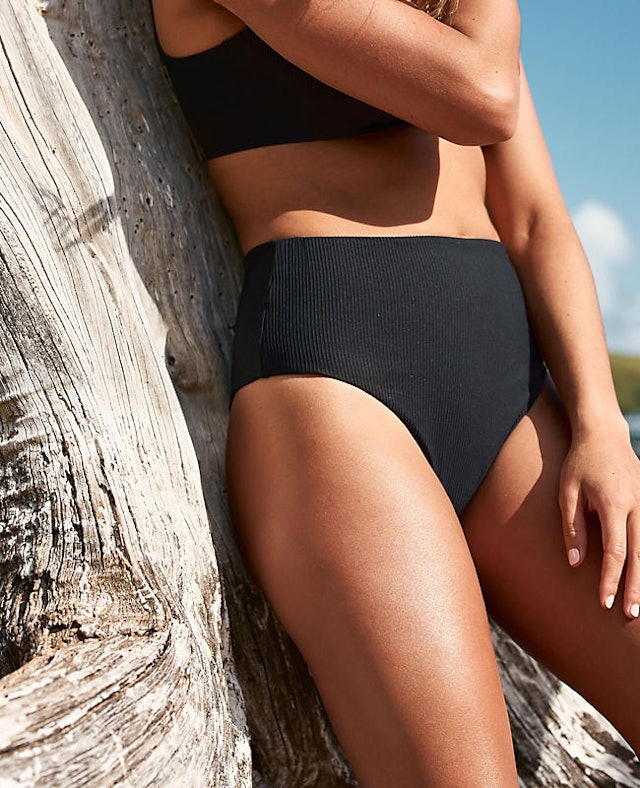Content Menu
● Rumors and Speculations
● Lululemon's Response
● Fan Reactions
● Alternative Options
● Introduction to Lululemon Swimwear
>> The Birth of Lululemon Swimwear
>> Key Features of Lululemon Swimwear
>> The Success and Challenges
>> The Decision to Discontinue
>> Impact on the Brand and Customers
>> Alternatives to Lululemon Swimwear
● The Future of Lululemon and Swimwear
● Lessons Learned
● Conclusion
Dive into the scandalous truth behind why Lululemon pulled the plug on their swimwear line - the shocking reasons revealed.
Lululemon Athletica, a name synonymous with high-quality athletic wear, has been a trailblazer in the fitness fashion industry since its inception in 1998. Founded by Chip Wilson in Vancouver, Canada, the company quickly rose to prominence with its innovative approach to yoga-inspired technical athletic apparel. While Lululemon is primarily known for its yoga pants and activewear, the company's venture into swimwear created waves in the fashion industry. This article explores the journey of Lululemon's swimwear line, from its exciting launch to its eventual discontinuation, and examines the impact this decision had on the brand and its loyal customers.
Rumors and Speculations
It's no secret that Lululemon has garnered a loyal following for their stylish and high-performance activewear, including their swimwear collections. However, recent whispers suggest that the brand may have made the decision to discontinue their swimwear line. Understandably, this news has left many customers feeling disappointed and concerned about the future of their favorite Lululemon swimsuits.
Related: Does Lululemon Make Swimwear?
Lululemon's Response
So, what does Lululemon have to say about these rumors? While there has been no official statement confirming or denying the discontinuation of their swimwear line, some reports suggest that the brand may be shifting their focus towards other product categories. This decision, if true, could be related to various factors such as market trends, customer demand, and overall business strategy.
Fan Reactions
Unsurprisingly, the news (or lack thereof) regarding the fate of Lululemon's swimwear has sparked a wave of reactions from fans. Many customers have taken to social media to express their thoughts and feelings about the potential discontinuation of Lululemon swimsuits. From disappointment to hope for a possible comeback, it's clear that these swimwear pieces hold a special place in the hearts of Lululemon enthusiasts.
Alternative Options
For those who have been loyal fans of Lululemon's swimwear but are now facing uncertainty about its future, fear not! Luckily, there are plenty of other activewear brands that offer high-quality swimwear options to suit your needs. Whether you're looking for trendy designs, comfortable fabrics, or performance-focused features, there are alternatives out there to explore and enjoy.
Introduction to Lululemon Swimwear
The Birth of Lululemon Swimwear
Lululemon's foray into swimwear was a natural progression for a brand that had already revolutionized the athleisure market. As the company expanded its product offerings beyond yoga wear, swimwear seemed like a logical next step. The launch of Lululemon's swimwear line was met with enthusiasm from its dedicated customer base, who were eager to see how the brand's commitment to quality and performance would translate to beachwear.
The initial swimwear collection featured the same attention to detail and technical innovation that Lululemon was known for in its other products. The swimsuits were designed to be both fashionable and functional, using high-performance fabrics that could withstand the rigors of active water sports while maintaining their shape and color. The line included a variety of styles, from one-piece suits to mix-and-match bikinis, catering to different body types and preferences.

Key Features of Lululemon Swimwear
1. Innovative Fabrics: Lululemon's swimwear incorporated the brand's proprietary fabric technologies, ensuring quick-drying, chlorine-resistant, and UV-protective properties.
2. Performance-Oriented Design: The suits were engineered to stay in place during active water sports, providing support and coverage without sacrificing style.
3. Versatility: Many pieces were designed to transition seamlessly from beach to street, aligning with the brand's athleisure philosophy.
4. Inclusive Sizing: The line aimed to cater to a wide range of body types, reflecting Lululemon's commitment to inclusivity.
5. Eco-Friendly Options: As sustainability became increasingly important to consumers, Lululemon introduced swimwear made from recycled materials.
The Success and Challenges
Initially, Lululemon's swimwear line was well-received. The brand's loyal customers appreciated the extension of Lululemon's quality and style into beachwear. The swimwear line allowed the company to capture a share of the lucrative swimwear market, particularly among fitness enthusiasts who were already fans of the brand's other products.
However, as with any new venture, challenges arose. The swimwear market is highly competitive, with established brands and fast-fashion retailers offering a wide range of options at various price points. Lululemon's premium pricing strategy, while successful in its core activewear lines, faced resistance in the swimwear category where consumers were often more price-sensitive.
Additionally, the seasonal nature of swimwear posed inventory management challenges for a brand accustomed to selling year-round activewear. The company had to navigate the complexities of producing and stocking swimwear that would primarily sell during specific months of the year.

The Decision to Discontinue
Despite initial success and positive reception, Lululemon made the surprising decision to discontinue its swimwear line. This move came as a shock to many loyal customers who had come to rely on the brand for their beach and pool attire. The exact reasons for the discontinuation were not widely publicized, but industry experts and insiders have speculated on several factors that may have contributed to this decision:
1. Focus on Core Competencies: Lululemon may have decided to refocus on its core strengths in yoga and athletic wear, where it held a dominant market position.
2. Profitability Concerns: The swimwear line may not have met the company's profitability targets, especially given the seasonal nature of the product.
3. Supply Chain Complexities: Managing a separate supply chain for swimwear, with its unique fabrics and construction requirements, may have proven challenging.
4. Market Saturation: The highly competitive swimwear market may have made it difficult for Lululemon to differentiate its offerings and maintain its premium positioning.
5. Strategic Shift: The decision could have been part of a broader strategic shift within the company, possibly coinciding with changes in leadership or corporate direction.
Impact on the Brand and Customers
The discontinuation of Lululemon's swimwear line had mixed effects on the brand and its customers. On one hand, it allowed the company to streamline its operations and focus on its core products, potentially leading to improved efficiency and profitability. On the other hand, it disappointed a segment of loyal customers who had come to rely on Lululemon for their swimwear needs.
For customers, the discontinuation meant having to seek alternatives that could match the quality and style they had come to expect from Lululemon. This created an opportunity for other brands to fill the gap left by Lululemon's exit from the swimwear market.

Alternatives to Lululemon Swimwear
With Lululemon's exit from the swimwear market, customers began looking for alternatives that could offer similar quality, style, and performance. Several brands stepped up to fill this void:
1. Athleta: Owned by Gap Inc., Athleta offers a range of athletic wear including swimwear that focuses on performance and style.
2. Sweaty Betty: This UK-based brand provides high-quality activewear and swimwear with a focus on innovative fabrics and designs.
3. Outdoor Voices: Known for its recreational apparel, Outdoor Voices offers swimwear that blends functionality with modern aesthetics.
4. Summersalt: A direct-to-consumer brand that has gained popularity for its inclusive sizing and sustainable practices in swimwear.
5. Jolyn: Specializing in performance swimwear for athletes, Jolyn has become a go-to for those seeking durable, functional suits.
6. Patagonia: While primarily known for outdoor gear, Patagonia's swimwear line appeals to environmentally conscious consumers looking for sustainable options.
These brands have capitalized on the gap left by Lululemon, often emphasizing similar values such as quality, performance, and sustainability.
The Future of Lululemon and Swimwear
While Lululemon has discontinued its dedicated swimwear line, the company hasn't completely abandoned the beach and pool market. The brand continues to offer certain products that can be used for water activities, such as quick-drying shorts and tops that can double as coverups or casual beachwear.
There's always the possibility that Lululemon might re-enter the swimwear market in the future, perhaps with a revised strategy or as part of a collaboration with another brand. The athleisure trend that Lululemon helped popularize shows no signs of slowing down, and the lines between activewear, casual wear, and swimwear continue to blur.

Lessons Learned
Lululemon's journey in the swimwear market offers several lessons for both established brands and startups:
1. Stick to Core Competencies: While diversification can be beneficial, it's crucial to ensure that new product lines align with the brand's core strengths and values.
2. Understand Market Dynamics: The seasonal nature of swimwear requires different inventory management and marketing strategies compared to year-round products.
3. Listen to Customer Feedback: Brands should maintain open lines of communication with their customers to understand their needs and preferences, especially when entering new markets.
4. Be Prepared to Pivot: Sometimes, the best strategic decision is to exit a market that isn't performing as expected and refocus resources on more profitable areas.
5. Consider Partnerships: Collaborations with established swimwear brands could have been an alternative strategy for Lululemon to enter the market with reduced risk.
Conclusion
The story of Lululemon's swimwear line is a testament to the dynamic nature of the fashion industry. While the brand's venture into swimwear was short-lived, it left an indelible mark on the industry and its customers. The discontinuation of the line demonstrates that even successful brands must continually evaluate their product offerings and make tough decisions to maintain their market position and profitability.
As the athleisure trend continues to evolve, and the boundaries between different types of apparel become increasingly blurred, it will be interesting to see how Lululemon and other athletic wear brands adapt their strategies. Whether Lululemon decides to re-enter the swimwear market in the future or continues to focus on its core products, the brand's influence on the intersection of fashion and function is likely to endure.
For now, fans of Lululemon's swimwear will need to explore the alternatives available in the market. However, the legacy of Lululemon's brief foray into swimwear lives on in the expectations it set for high-performance, stylish beachwear. As consumers continue to demand versatile, high-quality apparel for all aspects of their active lifestyles, the lessons learned from Lululemon's swimwear experiment will undoubtedly inform future innovations in the industry.



































































